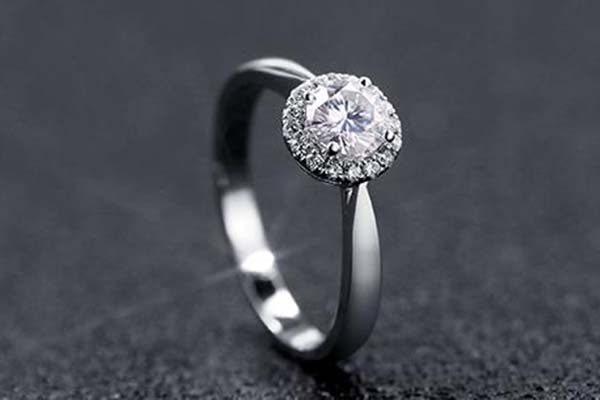Are Moissanite stone just imitation diamonds?
Are Moissanite gems just imitation diamonds, or do they have their own unique allure? Let’s explore the differences between these two sparkling stones.
Moissanite: A Radiant Creation
Moissanite, also called “Man-made Diamond,” is a synthetic gemstone that captures attention with its extraordinary brilliance. While not a true diamond, Moissanite’s luster can even outshine that of its natural counterpart. It shares some compositional similarities with diamonds, yet its price is typically only a fraction of what you’d pay for a genuine diamond. However, despite its captivating qualities, Moissanite lacks the aura of rarity that diamonds inherently possess.

Moissanite vs. Diamond: Key Differences
1. Origin and Production
Moissanite is a lab-created gem, initially discovered in minute quantities within meteorites. Diamonds form naturally deep within the Earth, while Moissanite is synthesized in controlled laboratory environments. This manufacturing process contributes to the cost difference between the two gemstones.
2. Cut and Sparkle
While diamonds feature the classic “Eight Hearts, Eight Arrows” cut, Moissanite’s cut is more akin to the “Nine Hearts, One Flower” pattern. This difference is attributed to the disparity in refractive indices between the two stones. Moissanite’s higher dispersion leads to thinner cuts, which, when executed similarly to diamonds, could result in a milky appearance.
3. Color and Radiance
In natural light, Moissanite can appear somewhat “dead white,” lacking the clarity and depth characteristic of diamonds. However, when exposed to ambient or semi-dark lighting, Moissanite’s radiance comes to life, bearing an uncanny resemblance to diamonds. The stone’s fiery play of colors is especially enchanting, making it an attractive option for budget-conscious jewelry enthusiasts.
4. Clarity and Rarity
Diamonds’ natural formation leads to a wide range of clarity grades, from flawless (IF) to included (P). On the other hand, Moissanite, as a synthetic creation, tends to exhibit excellent clarity, comparable to diamond grades of VS1 and above. This consistent clarity contributes to Moissanite’s appealing aesthetic.
5. Fire and Brilliance
The fire, or spectral dispersion, of Moissanite is remarkably vibrant. When exposed to direct light sources like spotlights or sunlight, Moissanite’s brilliance takes center stage, outshining even diamonds in certain aspects. The radiance of Moissanite is softer and more diffused, creating a distinct visual impact. In contrast, diamonds maintain their dignified elegance and deep allure across various lighting conditions.
The Verdict: A Captivating Alternative
While Moissanite is not a diamond, it boasts a luminous charm akin to diamonds, with a good price appeals to a broader audience. Its dazzling sparkle and unique fire make it an excellent choice for those seeking a captivating alternative to diamonds. However, it’s essential to acknowledge that Moissanite lacks the timeless prestige and scarcity that define natural diamonds.
Post Comment
You must be logged in to post a comment.